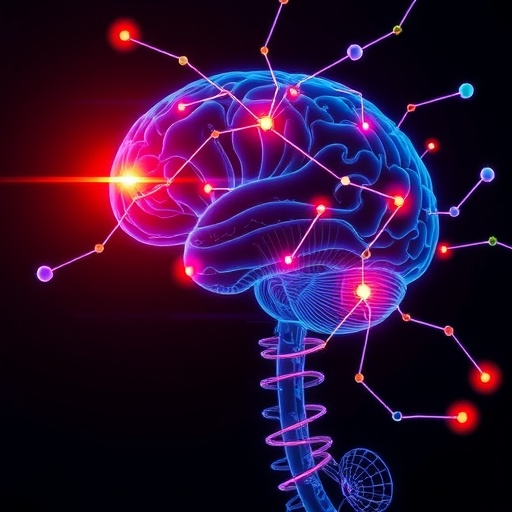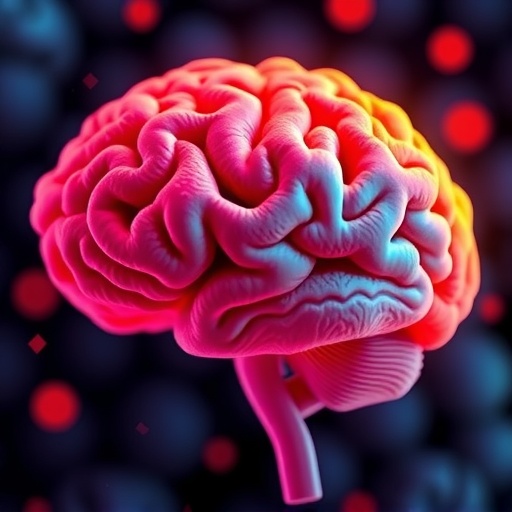Transcranial Electrical Stimulation (TES) is rapidly gaining recognition as an innovative approach for various neurological and psychiatric conditions. Researchers have sought to standardize the application of this technique, given its promise in clinical and experimental settings. A recent study led by V. Nejati and colleagues outlines a significant advancement in this field— the Report Approval for Transcranial Electrical Stimulation (RATES), which serves as a foundational guideline based on a Delphi consensus study involving experts in the domain. This initiative proves crucial in validating TES’s effectiveness and safety, thus paving the way for its broader acceptance in medical practice.
The Delphi method used in the study is renowned for its efficacy in achieving consensus among experts through a structured communication process. This study enlists critical specialists who examined various aspects of TES, weighing its potential benefits against risks and challenges. Their consensus aims to encompass diverse perspectives on best practices, incorporating both clinical efficacy and patient safety. The depth of their analysis emphasizes the collaborative nature of scientific advancement, underscoring that multidisciplinary input is vital when establishing standards for emerging technologies.
Central to the RATES initiative is the aim to enhance the reliability of TES as a therapeutic modality. This is increasingly important as healthcare providers seek evidence-based interventions. The report outlines specific recommendations on the parameters involved in TES, such as the amplitude, frequency, duration, and electrode placement. Each of these factors contributes not only to the efficacy of the intervention but also to minimizing side effects. The detailed categories you find in the report serve as a practical resource for clinicians, allowing them to optimize treatment protocols tailored to individual patient needs.
In offering practical guidelines, the study addresses the need for safety protocols surrounding TES treatment. It acknowledges the inherent risks that may occur during electrical stimulation but provides a framework for mitigating these hazards. The establishment of safety parameters becomes paramount, especially in vulnerable populations such as those with existing neurological disorders, where adverse reactions could abolish the potential benefits of treatment.
One of the notable insights from this consensus study is the necessity for continuous monitoring and assessment throughout the treatment process. The researchers advocate for incorporating standardized tools to evaluate outcomes reliably. This focus on measuring success, whether through subjective patient reports or objective clinical indicators, is essential for determining the effectiveness of TES interventions in real-world settings. It underscores a paradigm shift towards data-driven approaches in medical treatments, further anchoring clinical practices in robust scientific evidence.
Moreover, the report acknowledges the diverse nature of conditions targeted by TES, such as depression, anxiety, chronic pain, and cognitive impairments. Each of these conditions presents unique challenges and responses to electrical stimulation, which necessitates tailored treatment approaches. The flexibility and adaptability of TES enhance its appeal as a potential solution across a spectrum of clinical presentations, prompting multiplier effects on healthcare outcomes.
This groundbreaking research also broaches the subject of ethical considerations where TES implementation is concerned. The insistence on informed consent from patients is reiterated, ensuring that individuals are aware of the potential benefits and risks of undergoing the procedure. This advocacy for ethical practices aligns with broader trends in healthcare, where patient autonomy and awareness are increasingly prioritized. As TES enters more routine clinical settings, upholding these ethical standards will be crucial for maintaining public trust and transparency.
Furthermore, the significant role of education and training for healthcare practitioners involved in administering TES cannot be overstated. The report emphasizes the importance of providing clinicians with comprehensive instruction on the precise application of electrical stimulation techniques. Proper training will foster not only confidence among practitioners but also improve patient outcomes as practitioners become adept at avoiding common pitfalls associated with TES usage.
In terms of future research directions, the RATES report advocates for ongoing collaborative studies to further validate its recommendations. The dynamic nature of neuroscience and therapeutic technologies requires that research evolves rapidly, with findings continuously updating clinical paradigms. This collective inquiry will only solidify the standing of TES within the medical community, encouraging more healthcare systems to integrate it into their treatment offerings.
One of the compelling features of the study is its global perspective, encompassing experts from diverse geographic locations and clinical backgrounds. Such collaboration amplifies the potential for widespread healthcare equity, ensuring that the benefits of TES can be disseminated more uniformly across different populations. The realization that therapeutic approaches may need to be adapted based on cultural contexts is an essential takeaway from the consensus-led process.
Furthermore, as digital technologies proliferate, the integration of TES with complementary advancements is also highlighted. The intersection of brain-computer interfaces and remote monitoring systems with TES could revolutionize how treatments are provided and evaluated. As these technologies become more integrated, they promise to enhance not only clinical efficacy but also patient engagement and empowerment throughout the therapeutic journey.
In conclusion, the RATES initiative stands as a landmark study within the evolving landscape of Transcranial Electrical Stimulation. Its foundation in a Delphi consensus process highlights the importance of expert engagement and standardized practices in the effective application of this technology. The implications of these recommendations are far-reaching, extending beyond clinical settings into the realm of ethical considerations and future research. The endorsement from expert panels lends credibility to TES and sets it on a promising trajectory for wider acceptance in contemporary medical practice.
As we move forward in the unfolding narrative of neurological therapy, the commitment to patient safety, practitioner training, and dynamic research remains paramount. The proactive approach taken by this study illuminates a path poised for advancement, distinguishing itself not only as a validation of TES’s potential but also as a blueprint for responsible and effective usage in clinical environments.
Subject of Research: Transcranial Electrical Stimulation (TES)
Article Title: Report Approval for Transcranial Electrical Stimulation (RATES): expert recommendation based on a Delphi consensus study.
Article References:
Nejati, V., Vaziri, Z., Antal, A. et al. Report Approval for Transcranial Electrical Stimulation (RATES): expert recommendation based on a Delphi consensus study.
Nat Protoc (2025). https://doi.org/10.1038/s41596-025-01259-0
Image Credits: AI Generated
DOI: 10.1038/s41596-025-01259-0
Keywords: Transcranial Electrical Stimulation, Delphi consensus, neural therapy, clinical effectiveness, safety protocols.
Tags: clinical applications of transcranial stimulationDelphi method in medical researchemerging technologies in neurologyexpert consensus on TESmultidisciplinary collaboration in TESRATES initiative for TES approvalsafety and effectiveness of TESstandardization of TES practicesTES for neurological conditionsTES for psychiatric disordersTranscranial Electrical Stimulation guidelinesvalidation of TES therapeutic efficacy





